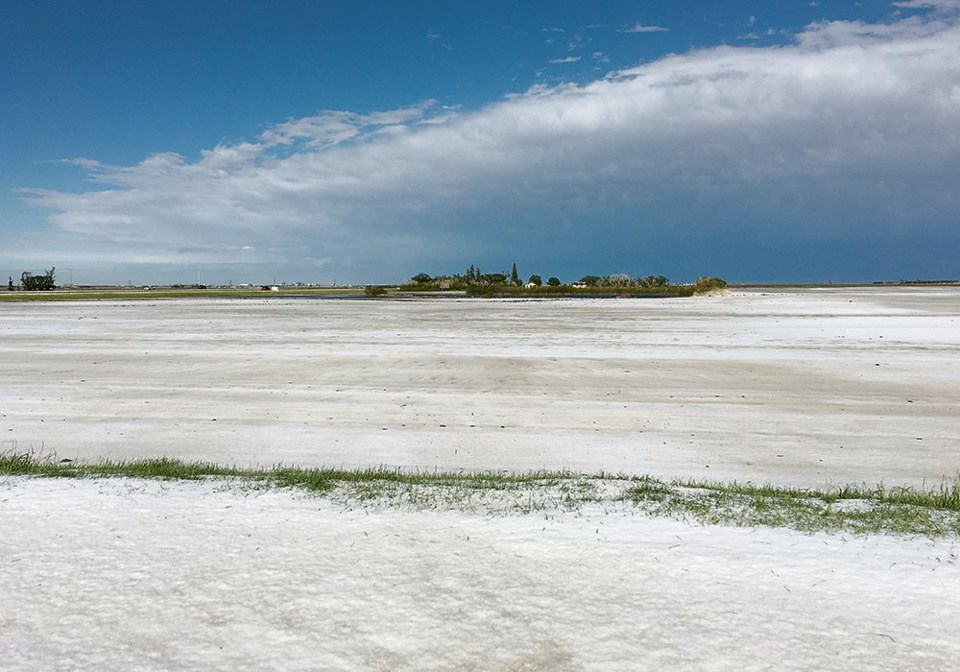REGINA — Coating the ground like heavy snow, many of the unseasonable hail’s effects that struck near Regina unknown so far
An early spring storm hit Regina-area communities June 10, with hail hammering spots around the Trans-Canada Highway west of Regina.
A narrow strip of intense rain and hail struck quickly, blanketing fields and ditches with so much hail it looked like a mid-June snowstorm.
“It was shock, basically,” said Geoff Vallance, a farmer in the Grand Coulee area, just west of Regina. “I’ve never really seen hail this early in the year, and to have that much of it… it’s crazy when you think about it.”
Dozens of vehicles wound up in the ditch as about 10 centimetres of hail and about seven cm of rain, fell in less than 20 minutes. Vallance said the hail stayed on the ground for nearly 24 hours.
Ben Heenan, who also farms near Grand Coulee, was also hit by the storm. Between him and Vallance, durum, wheat, canola, flax and lentils will all be affected to some degree.
“I mean, it’s a hailstorm,” said Heenan. “They’re not going to be perked up by it, that’s for sure. It’s hail after seeding, so they’ll be damaged to some extent on virtually everything that was hit.”
Agrologist Travis Wiens of Annex Agro, works as a consultant for farmers.
“I’ve got a little bit of grey hair but not enough that I’ve ever seen this much hail this early,” he said.
He said on Twitter that it will be a learning experience to see how crops hit so early by hail will be affected.
Wiens, Heenan and Vallance are optimistic the crops will survive, but the excessive rain might prove to be the bigger issue, as crops will be drowned out and pushed into the mud.
Wiens said crops in the Grand Coulee area before the storm were looking good, as they received an optimal amount of rain compared to many other parts of the Prairies.
“A lot of the durum has already been sprayed, so it’s like four leaves,” said Wiens. “Lentils would probably be three-to-four nodes, and the canola mostly is just emerging.”
The growing point of the durum and spring wheat in the area should still be below the ground, a possible saving grace. Any later in the growing stage and the hail might’ve had a severe impact.
“It should have a good chance to recover,” said Wiens. “It’s just going to be really late…. So, I don’t know what that’s going to look like until we actually get across it.”
If the crops fail to recover, these farmers might be looking at re-seeding, a high-risk scenario entering the middle of June as the possibility of early frost in fall looms.
“It is getting late, but you’re optimistic that you get good weather in the fall, and if you do have to reseed the crop will make it,” said Vallance. “But yeah, you kind of never want be seeding on June 10.”
The option of planting cereal crops for feed or ground cover might be a choice for farmers, according to Wiens, as he doesn’t know if it will be dry enough for the farmers to get back in the field to re-seed.





